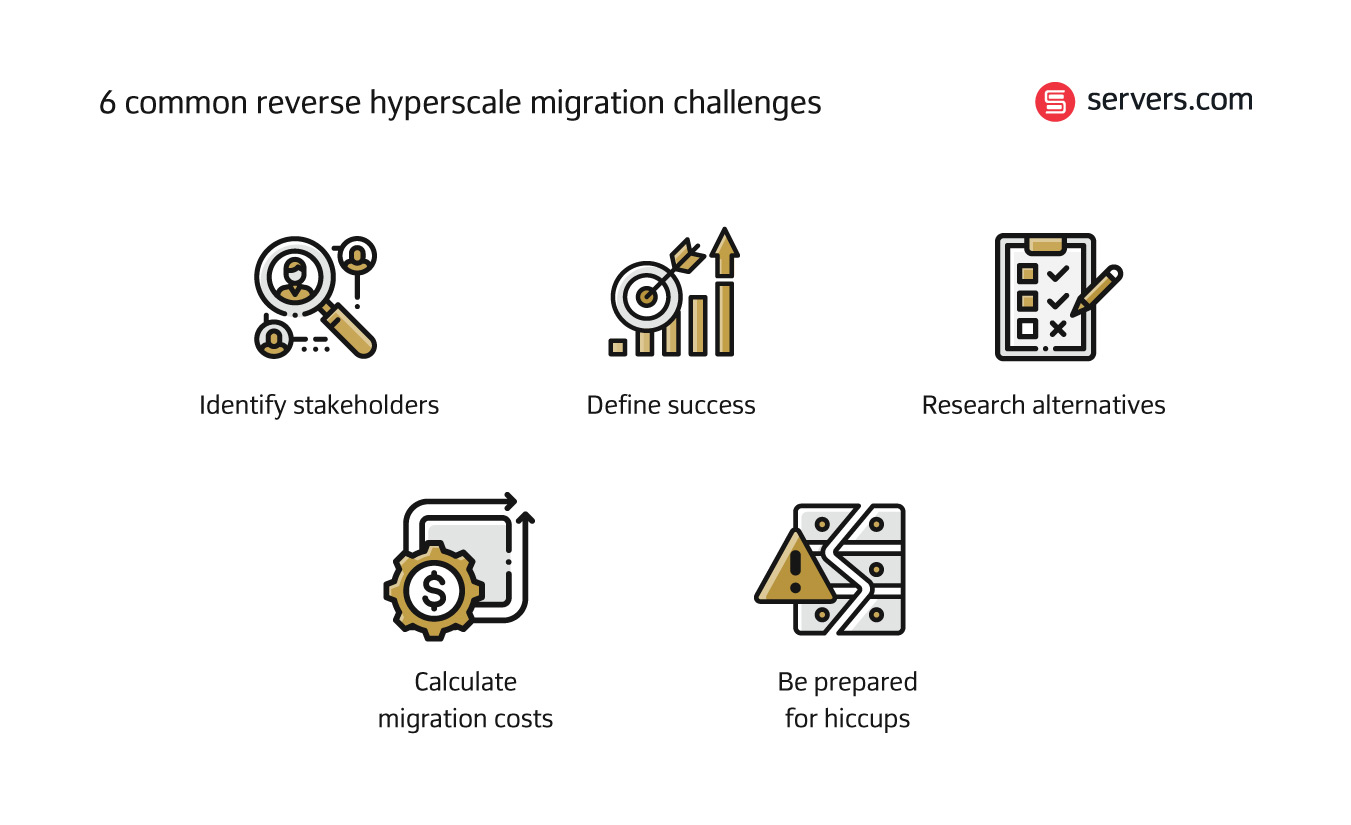

94% of IT leaders have been involved in some kind of cloud repatriation project within the last three years. And rising costs, complexities, and vendor lock-in are to blame.
And it’s not just a statistic. It’s something a lot of businesses are talking about:
“The hyperscalers want to sell you their own sort of lock-in, all-in one solution,” shared Andrew Walker, Head of Business Development at Gameye. “And when you’re trying to do everything in one package you can’t solve every problem equally well”.
“When you try to make the jump to the cloud you can quickly end up with costs getting out of hand,” shared the Global Director of Technology of an iGaming platform. “You end up wasting a lot of resources and if you’re not aware of the measures needed to control costs, you’ll soon end up with your CFO knocking on your door”.
It all points to one thing: cloud-first strategies are reaching their limits.
To borrow the words of Tim Whiteley, Co-Founder of Inevidesk, businesses are starting to realize that “the cloud isn’t magic”.
So, if the last decade was the era of cloud native startups and cloud transformations, we’re now entering a season for infrastructure optimization and reverse cloud migrations.
And to make that transition successfully you’ll need a cloud exit strategy.
Table of contents
Having a cloud exit strategy is essential - even if you have no immediate plans to migrate away from cloud. It’s a key part of contingency planning and, in an ideal scenario, should be finalized before signing any contracts with a cloud provider in the first place.
Your cloud exit strategy will support business continuity if migration out of cloud becomes necessary. That could be because of rising costs and complexity, but there are many other possible reasons, like:
Cloud service provider (CSP) failures
New legal requirements in your region
Because of a merger or acquisition
If your cloud vendor stops supporting an essential application or service
Beyond this, having a cloud exit strategy in place gives you greater negotiating power and helps avoid vendor lock-in by preventing dependency on a single cloud provider. So, in short, you should have one.
There isn’t a one-size-fits all exit strategy for cloud customers. But there are some fundamental steps that should be covered in every cloud exit strategy.
Determine your key stakeholders and identify who will be responsible for what. Create a task force including representatives from across every touchpoint in the process from sourcing to exit, including:
Business owners
IT leadership
Technology architects
Procurement & sourcing
Legal and compliance
HR and communications
IT security
Finance
In an ideal world, you’d be creating your cloud exit strategy before signing any contracts. But, let’s face it, we don’t live in an ideal world and most cloud customers don’t have a well-defined cloud exit strategy.
As our CRO, Isaac Douglas recently wrote in his blog about migration challenges, “a lot of customers that we work with on reverse cloud migrations just want to pick up their infrastructure and move it”.
But that’s not how migrations work. In fact, it can take months to fully migrate away from cloud. So, if you don’t have a cloud exit strategy in place already, the first step is to thoroughly assess your current environment.
Take the time to understand your infrastructure and identify:
How it’s designed and the specific servers that you’re using
What’s included in your monthly bill
Any major inefficiencies
Platform integrations (most business’ infrastructure will be connected to multiple third-party providers so it’s worth carrying out a thorough audit)
Tightly coupled systems (these may not be able to be relocated to a different data center)
Once you’ve done this work, you can start to plan a phased approach out of cloud – starting with those parts of your infrastructure that will have the least impact on your business.
Research alternative infrastructure solutions that would enable you to achieve your planned performance outcomes. Compare all the public cloud infrastructure alternatives on offer including on-premises and colocation, bare metal hosting, and hybrid solutions.
Once you’ve narrowed down your search, get in touch with your preferred vendors and suppliers to get personalized estimates. Remember the best choice won’t necessarily be the cheapest, it’s important to find a solution that strikes the right balance between affordability, performance, control over your technology, and support.
Calculate the total possible migration costs your business could incur by migrating to your preferred solution. This number should include:
Cost of hardware - for on-prem/ colocation options
Cost of hosting – for Infrastructure as a service (IaaS) options
Data migration fees
Labor costs
Post migration expenses (licensing, maintenance, compute, administration fees)
Cost of service overlap (to keep applications running during the transition)
This last point is something that often fails to be considered. Typically, you’ll need to factor in a period where you’ll be paying to run two infrastructure environments simultaneously. This ensures that the ecosystem is running correctly in the new environment and that the phased transfer of your data is fully complete before migrating fully to the new environment. Factoring these costs in at the start of the process will help you avoid nasty surprises later.
Once you’ve calculated your total migration costs, compare current infrastructure spend with a projected long-term ROI after migration. This stage is particularly important if your migration is going to be driven by cost-optimization. You’ll need to determine the minimum cost saving that would make leaving cloud worthwhile for your business.
No cloud exit strategy is failsafe, so you won’t be able to plan for every eventuality. When it comes to executing your plan, expect to encounter some challenges - especially if you’d previously built your entire infrastructure stack around a single vendor. You’ll probably find that some of the products or services you’re using aren’t available elsewhere – and you’ll need to work with your new service provider to find suitable alternatives.
Incompatible technology is a common challenge when migrating away from hyperscale cloud. In a bid to lock customers into their platforms, hyperscale cloud providers will make it difficult for you to replicate your exact environment elsewhere. So, you’ll need to be prepared to explore new approaches to setups and technologies. For example, adopting a new type of database or application.

In his recent video for Dark Matter, David Heinemeier Hansson, Co-owner and CTO of 37Signals said “the fundamental conclusion we reached was that, by in large, [cloud] is not easier, it is not faster, and it is not cheaper. And that was really the analysis that brought us to committing to our cloud exit”.
As cloud first strategies start to reach the limits of their efficacy, not having a robust cloud exit strategy is one of the biggest infrastructure hosting mistakes you can make. Your cloud exit plan is an incredibly important resource that will help you:
If you’re looking for an example, the UK’s National Health Service (NHS) has a great cloud exit strategy example documented online. It details the circumstances under which a cloud exit would be necessary for the NHS and the plans in place for executing the migration (including specific strategies for application exit, data movement, security and identity access management, general management, people, and business continuity). It’s well worth a look.

Frances is proficient in taking complex information and turning it into engaging, digestible content that readers can enjoy. Whether it's a detailed report or a point-of-view piece, she loves using language to inform, entertain and provide value to readers.